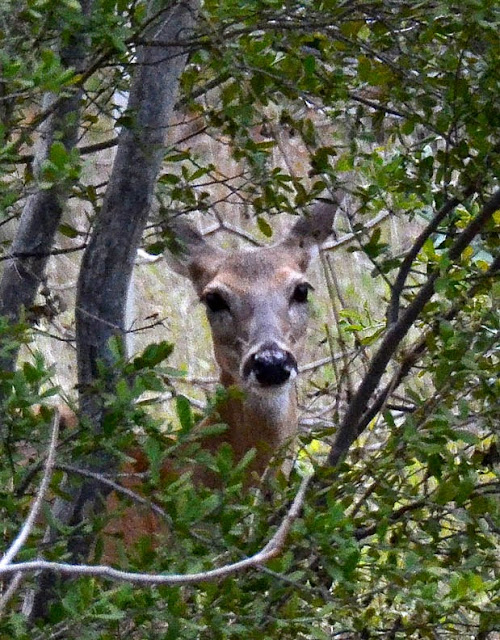The Tube-tongue's flowers are easily overlooked. They are only about a quarter inch or so wide. I was concerned about them being trampled. I pointed the flowers out to the group and without giving it much thought said these flowers served an important ecological function. Of course, I was immediately asked what important function Tube-tongue serves in the woodland ecology.
With only slightly more thought than I gave the initial statement, I replied that any flower, even the very small ones, blooming during a drought are critical to the survival of pollinator insects. In all honesty, I had no idea at the time if any insects were actually attracted to the Tube-tongue blossoms. It seemed intuitive that they would be. I could just as well have replied with great certainty that the Tube-tongue plants stabilize the soil along the edge of the woods where they tend to grow.
It wasn't until I walked the Nogales Trail at Medina River Natural Area over a month later on July 31st that I saw first hand how true my statement about pollinator survival actually is. July was a very dry month. The only flowers blooming along the Nogales Trail on the 31st were Turkscap, Alamo Vine and Tube-tongue. Numerous insect pollinators of all kinds were particularly attracted to the Tube-tongue.
One of the most interesting and often overlooked of these pollinators were the Ornate Checkered Beetles (Trichodes ornatus):
I should mention that nothing is ever simple, especially with the small stuff. The larvae of Ornate Checkered Beetles can be a pest where their range overlaps with Leafcutter Bees. The beetle larvae can be parasitic on Leafcutter Bee grubs, but feed on flower pollen in the absence of bee grubs.
All of these photos were taken along the Nogales Trail at the Medina River Natural Area on Wednesday, July 31, 2013.
All of these photos were taken along the Nogales Trail at the Medina River Natural Area on Wednesday, July 31, 2013.






















